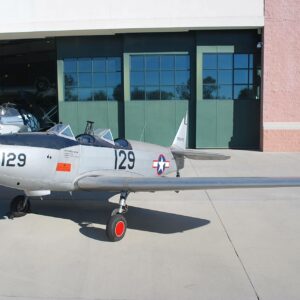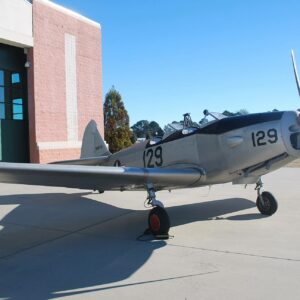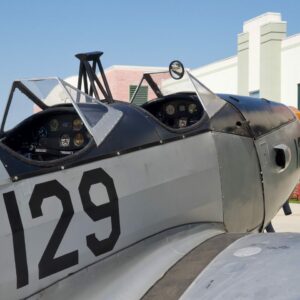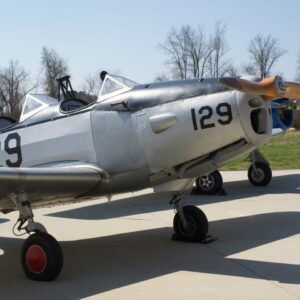Compared to the more recognizable biplane style primary trainers, the PT-19 provided an advanced training platform that more closely approximated the flying characteristics of combat aircraft types. It provided higher flight speeds and wing loading that better resembled modern monoplane aircraft of the time. This translated to more precision and care for the cadets when flying the PT-19, a skill best learned early.
Over 7,700 aircraft would eventually be built in the PT-19 series, with the first one leaving the Hagerstown, MD factory in February 1940. The Military Aviation Museum’s PT-19A was built in Hagerstown in 1943 and accepted into the USAAF in February 1944. The aircraft was initially assigned to the AAF Basic Flying School at Greenville, Mississippi and later transferred to Fletcher Field, Mississippi.
Did You know?
The PT-19 series of aircraft had different designations depending on which engine was fitted. PT-19s became PT-23s when a shortage of Ranger engines saw airplanes fitted with 220 hp Continental R-670 radial powerplants.
Specifications
- Number Built: 7,742 total Cornells (4,500 PT-19A variants)
- Year Produced: 1942
- Serial Number: 42-83643
- Crew: (2) Instructor Pilot, Student Pilot
- Current Pilots:
Dimensions
- Length: 27 ft. 8 3/8 in.
- Wingspan: 36 ft. 11 3/16 in.
- Empty Weight: 2,022 lbs.
- Loaded Weight: 2,736 lbs.
- Engine: 1x Ranger L-440-3 inverted, inline, six-cylinder, air-cooled piston engine
- Engine Power: 200 hp
Performance
- Cruising Speed: 114 mph
- Max Speed: 126 mph
- Range: 400 miles
- Ceiling: 16,000 ft.
- Rate of Climb: 675 ft./min.
Armament
- N/A – unarmed




